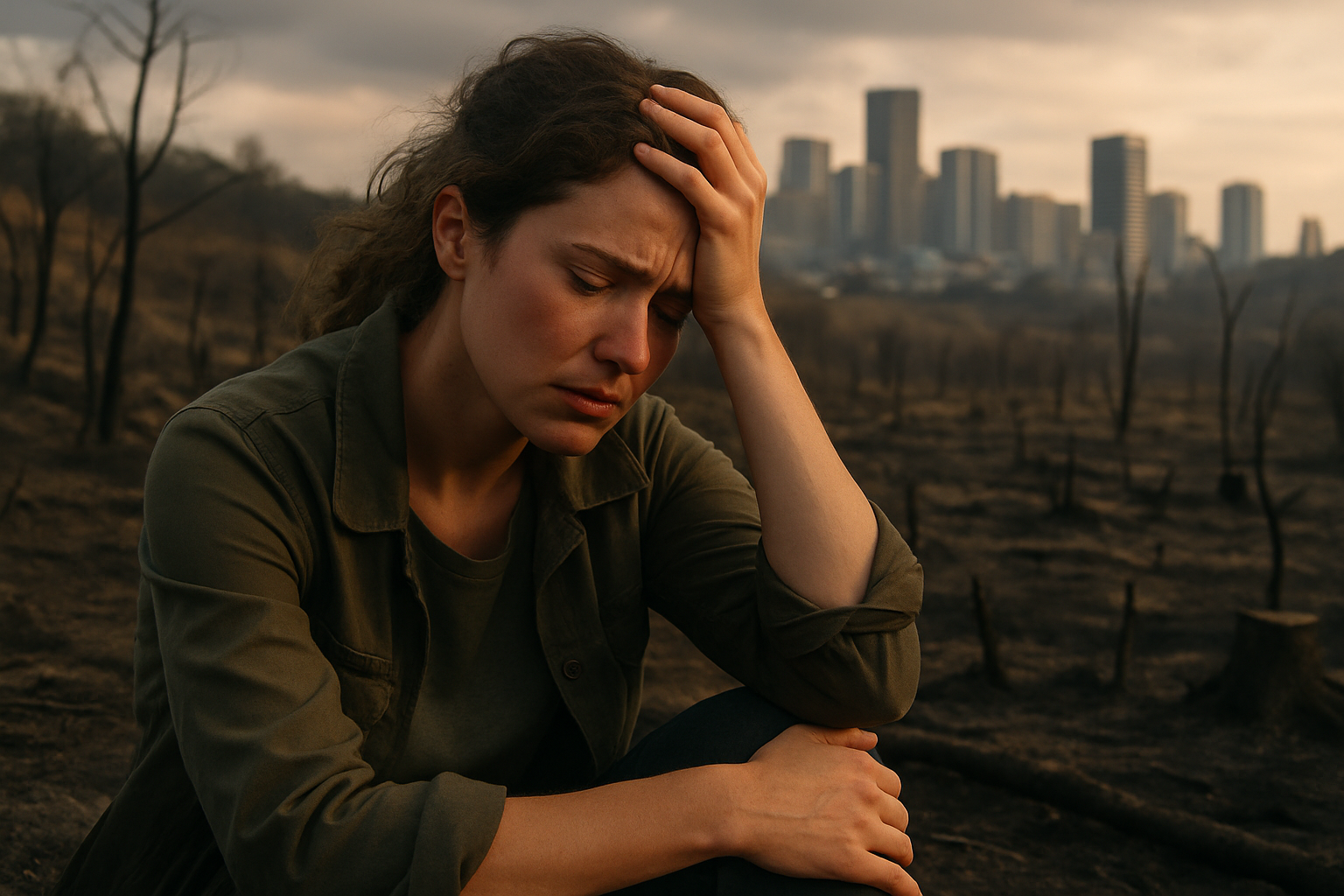Solastalgia: The Emotional Toll of Environmental Change
The shifting landscapes of our world are causing a new form of distress. Solastalgia, a term gaining traction in psychological circles, describes the emotional pain experienced when one's home environment is under assault. This concept goes beyond mere nostalgia, delving into the profound impact of ecological changes on mental health and community well-being. Read below to explore this emerging phenomenon and its implications for society.

The Genesis of Solastalgia
The term solastalgia was coined in 2003 by Australian philosopher Glenn Albrecht. It emerged from his observations of distress among communities in New South Wales, where large-scale open-cut coal mining was dramatically altering the landscape. Albrecht noticed that residents were experiencing a form of homesickness without having physically left their homes. This led him to create a word that could encapsulate this specific type of place-based distress.
Solastalgia combines the Latin word ‘solacium’ (comfort) with the Greek root ‘algia’ (pain). It describes the pain or distress caused by the loss of, or inability to derive, solace connected to the negatively perceived state of one’s home environment. Unlike nostalgia, which involves longing for a place you’ve left, solastalgia is about mourning the transformation of a place you still inhabit.
The Psychological Impact of Environmental Change
The concept of solastalgia highlights the profound connection between humans and their environment. As climate change and human activities alter landscapes, many individuals experience a sense of loss and disorientation. This emotional response can manifest in various ways, including anxiety, depression, and a feeling of powerlessness.
Research has shown that solastalgia can have significant mental health implications. A study published in the journal EcoHealth found that drought-affected rural communities in Australia experienced higher levels of psychological distress compared to those in non-drought-affected areas. The researchers attributed this distress partly to solastalgia, as residents witnessed the degradation of their once-familiar surroundings.
Solastalgia in Different Contexts
While initially observed in the context of mining, solastalgia has since been recognized in various environmental change scenarios. Climate change-induced events like rising sea levels, intensifying storms, and prolonged droughts are primary drivers of this phenomenon globally.
In the Arctic, indigenous communities are experiencing solastalgia as warming temperatures alter traditional hunting grounds and disrupt cultural practices. Coastal communities facing erosion and flooding are grappling with the potential loss of their homes and way of life. Even urban dwellers can experience solastalgia as gentrification and rapid development transform familiar neighborhoods.
Natural disasters also trigger solastalgia. Survivors of wildfires, hurricanes, or floods often return to dramatically altered landscapes, struggling to reconcile their memories with the new reality. This dissonance can complicate the recovery process and contribute to long-term psychological distress.
Solastalgia and Social Movements
The recognition of solastalgia has contributed to the growth of environmental movements and eco-psychology. It provides a framework for understanding the emotional dimensions of climate change, helping to mobilize action and support for affected communities.
Climate activists have begun incorporating the concept into their messaging, emphasizing the personal and emotional toll of environmental degradation. This approach can make the abstract notion of climate change more tangible and relatable to the general public.
Moreover, solastalgia has influenced the development of therapeutic approaches. Eco-therapy and nature-based interventions are gaining traction as ways to address the psychological impacts of environmental change. These methods often involve reconnecting individuals with nature and fostering a sense of agency in environmental stewardship.
Addressing Solastalgia: Challenges and Opportunities
Tackling solastalgia presents both challenges and opportunities for society. On one hand, it requires acknowledging the reality of environmental change and its psychological impacts, which can be difficult and painful. On the other hand, it opens up avenues for community building, environmental action, and innovative approaches to mental health care.
One approach to addressing solastalgia involves community-based initiatives that aim to restore and protect local environments. These efforts not only help mitigate environmental damage but also provide individuals with a sense of agency and connection to place. For example, urban greening projects or community gardens can help restore a sense of environmental well-being in urban areas.
Education and awareness are also crucial. By understanding solastalgia, individuals can better recognize and articulate their feelings, potentially reducing the sense of isolation that often accompanies this distress. Mental health professionals are increasingly incorporating environmental factors into their assessments and treatments, recognizing the role that place and environmental change play in psychological well-being.
The Future of Solastalgia Research and Application
As environmental changes accelerate, the study of solastalgia is likely to gain more prominence. Researchers are exploring how this concept intersects with other forms of eco-anxiety and how it manifests across different cultures and environments. There’s also growing interest in understanding how solastalgia affects vulnerable populations, including indigenous communities and those in low-income areas who may have fewer resources to adapt to environmental changes.
The concept of solastalgia also raises important questions about urban planning and development. How can we design cities and manage landscapes in ways that minimize the psychological distress associated with change? Some urban planners are already incorporating these considerations into their work, aiming to create spaces that can evolve while maintaining a sense of place and continuity for residents.
In conclusion, solastalgia represents a critical intersection of environmental and mental health concerns. As we grapple with the realities of climate change and environmental degradation, understanding and addressing solastalgia will be crucial for maintaining individual and community well-being. By recognizing the profound connections between people and place, we can work towards creating more resilient communities and healthier relationships with our changing environment.





